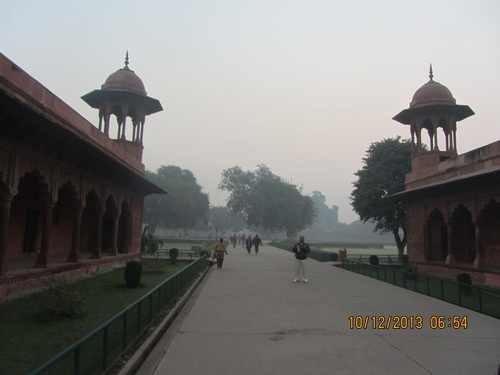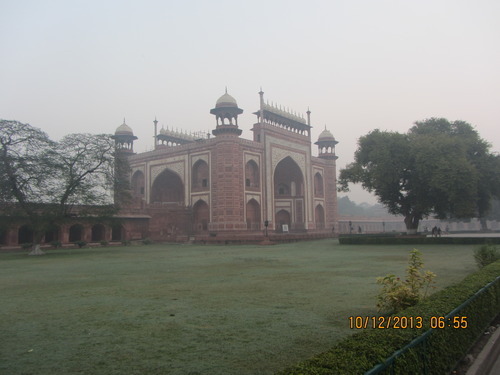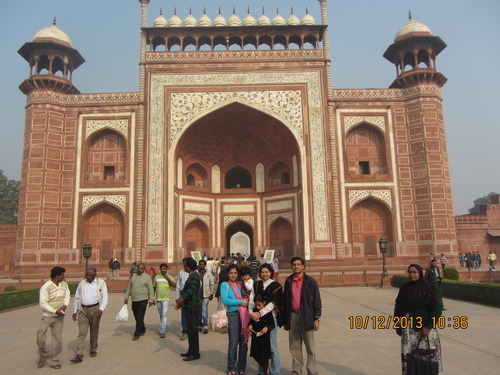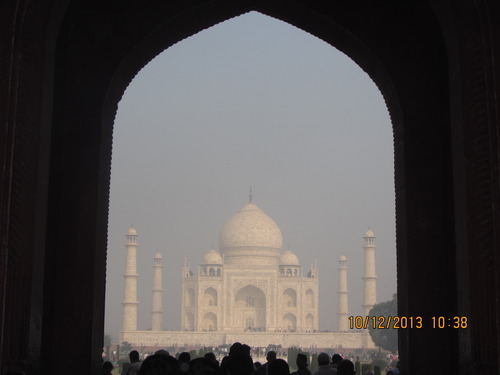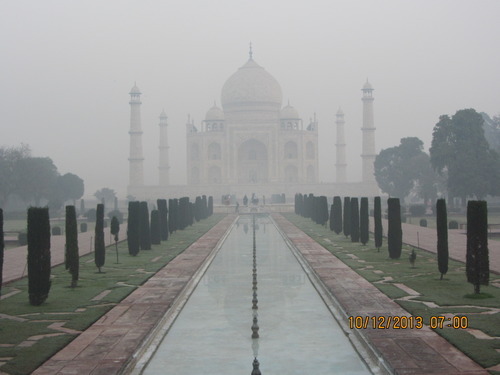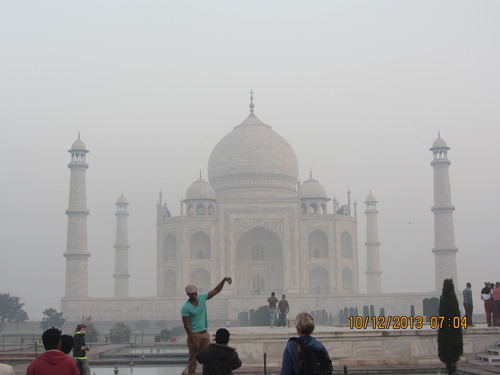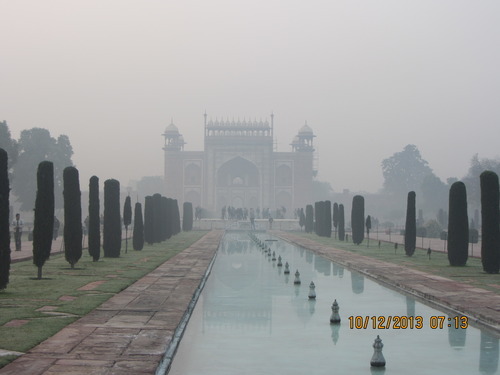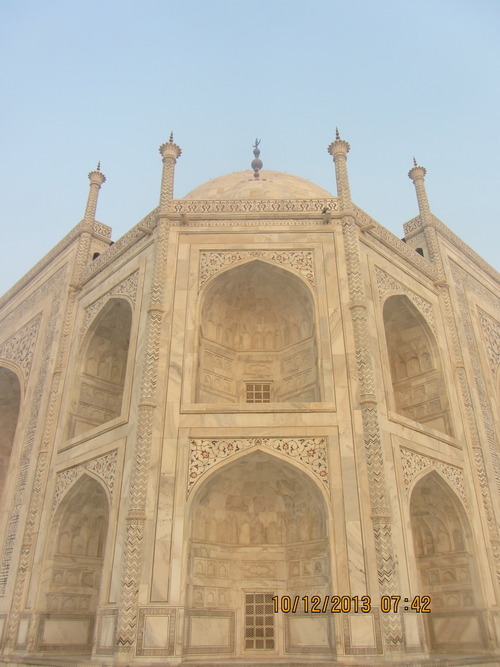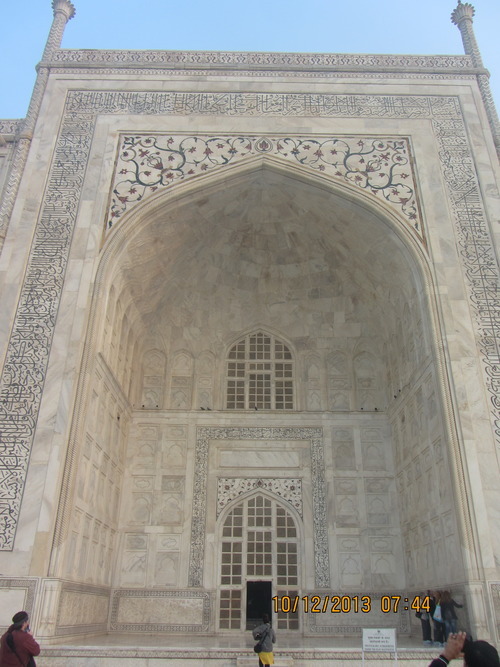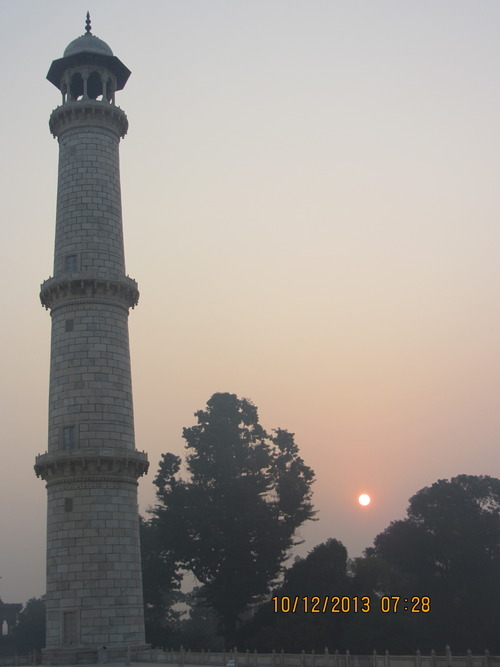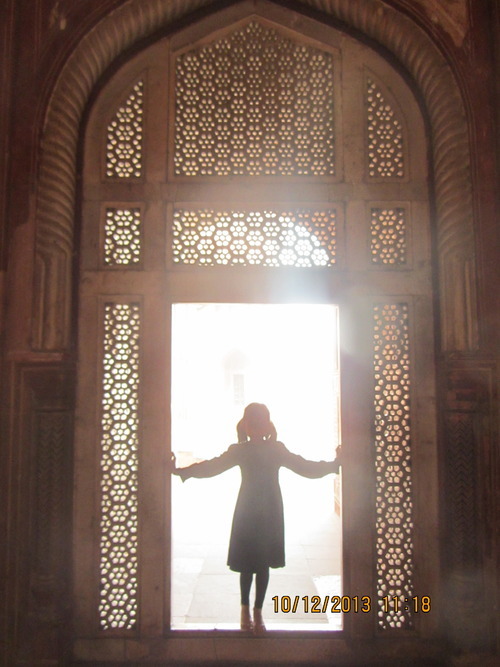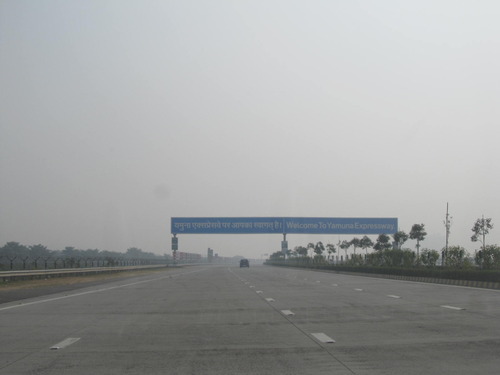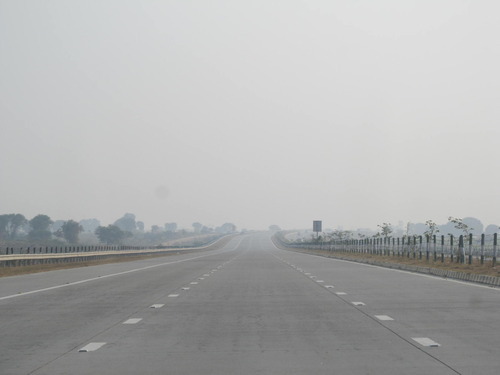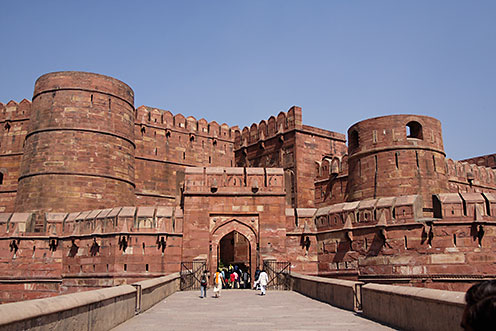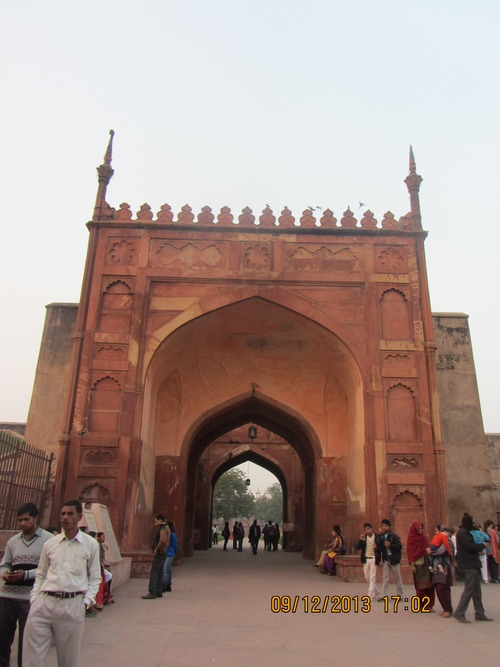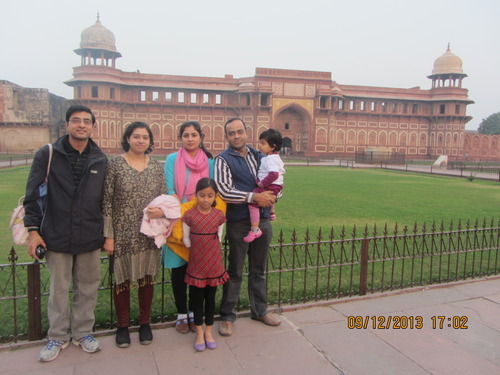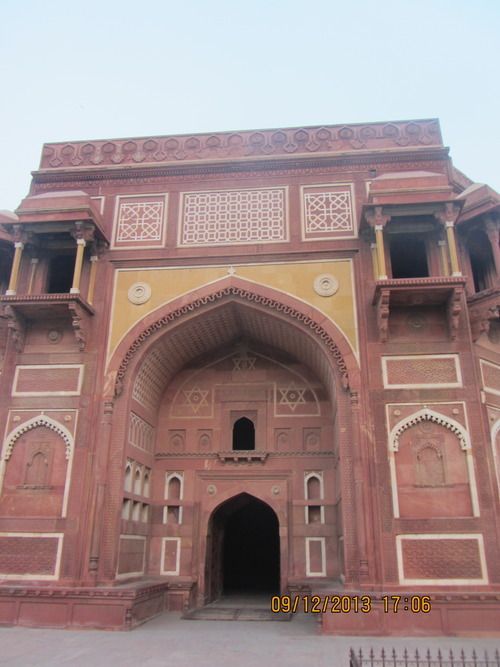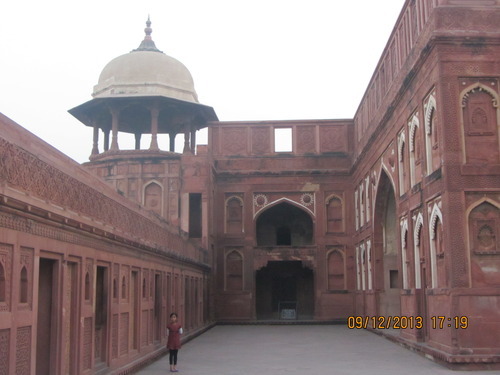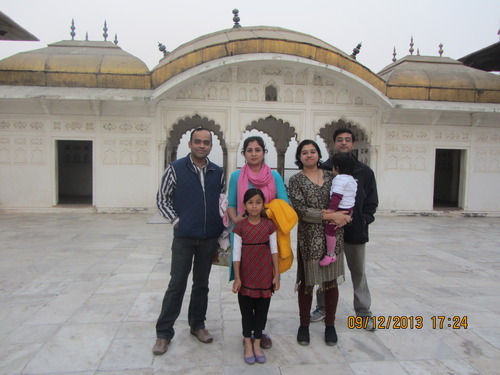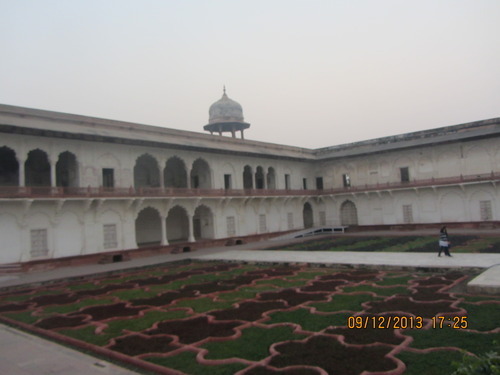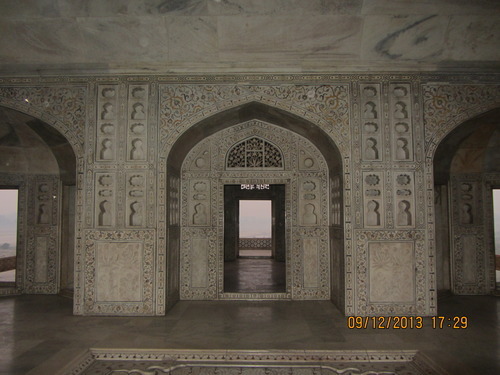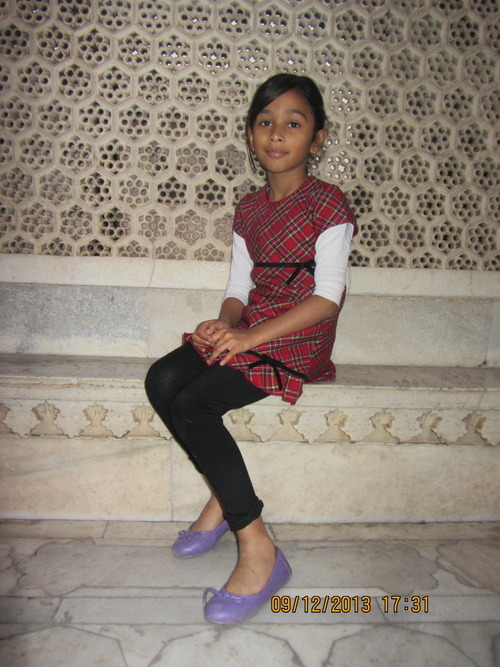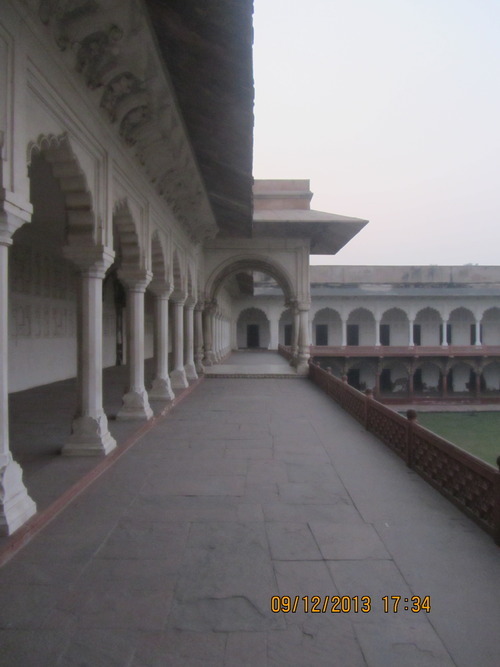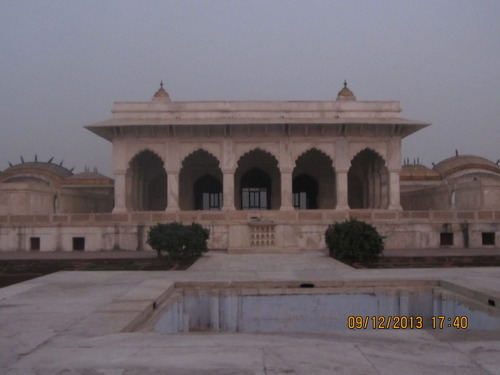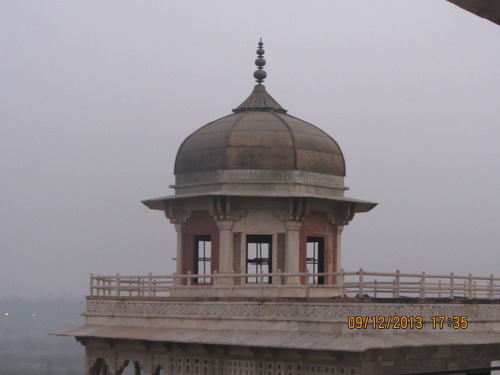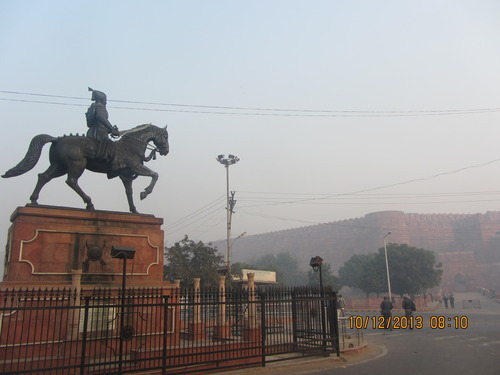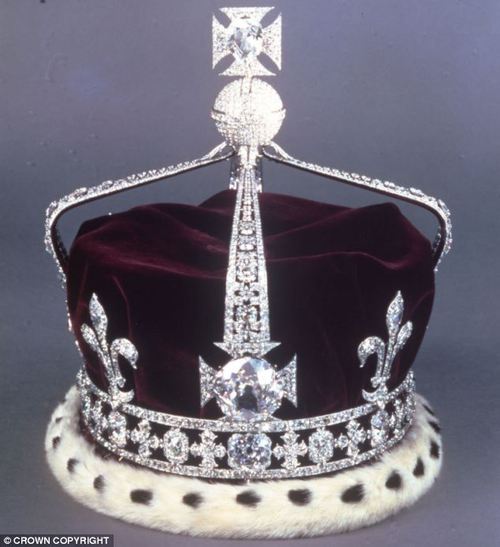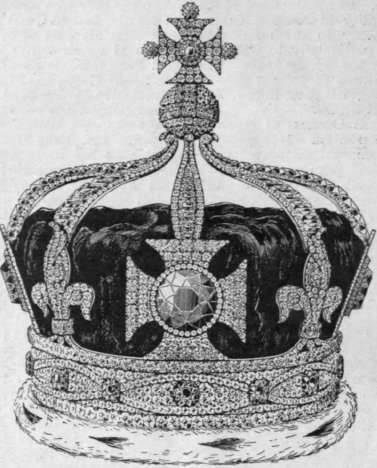The next day was the Taj Mahal day.
There are three entrances to the Taj. The East Gate (Fatehbadi Darwaza), West Gate (Fatehpuri Darwaza) and South Gate (Siddhi Darwaza). The South Gate is most popular among tourists as it is close to the Taj Ganj area, where most of the hotels are located. However, the ticket counter here opens only at 0800h. The ticket counters at the East and West Gates open at 0600h.
The West Gate is preferred as the distance from the parking to the entrance is only 700m, while it is over 1.6km from the East gate. However, battery operated cars or camel drawn carts are available at both places. We decided to go early in the morning before the crowds overrun the place. Of course, our spouses and children wished us luck but chose to remain in the warmth of the blankets.
We reached the ticket counter (West gate) at 0615h and there was already a line, mainly foreigners. The ticket is just Rs.20 (Free for children below 15; Foreigners Rs.500).
**********An Aside************
I am in favor of charging foreigners extra, while charging Indians very nominally, as we should give our own people the opportunity to enjoy their rich cultural heritage. However, this extra charge makes sense only if this revenue is utilised for the upkeep of the monument. But we don't even maintain basic cleanliness around our most iconic and famous tourist attraction. It's a shame. The area is littered and smells of horse shit. The facilities created are good, but simple regular cleaning of the area would go a long way in improving the overall experience.
**********************************
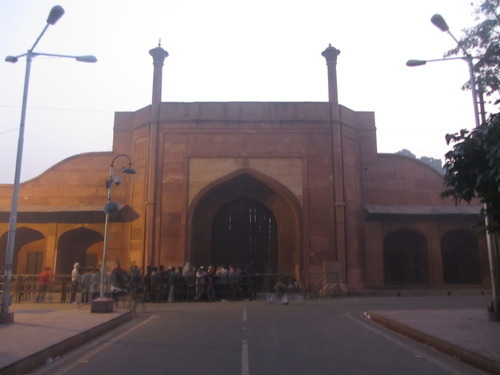
But the mad rush early in the morning was in vain as the gates itself open only at 0700h. We stood in the line and the gates were opened at 0700 sharp. There is a strict security check at the entrance and many items are not permitted inside. One item which is strictly not permitted is Gutka, as many of us Indians don't even spare the Taj when we spit.
On entering, we walk along a well tended pathway to the Jilaukhana (Forecourt area). This is an open ground surrounded by residences for attendants, keepers, etc, which was used as the alighting area for visitors, before they entered the Great Gate (Darwaza-i-Rauza). All the structures surrounding the Taj, which include tombs of the other wives of Shah Jahan, residences, etc are made of Red Sandstone. This greatly increases the impact of the white marble structure of the Taj Mahal when you enter.
(Darwaza-i-Rauza)
The main entrance, Darwaza-i-Rauza, is a rectangular gate framed with an inscription from the Qur’an, inviting the believers into Paradise. The central vault inside the gate is decorated with stars. As we stand in the darkness within the vault of the gate, we get the first glimpse of the Taj. It is difficult to describe the beauty of the white structure framed by a dark red arch.
The moment you walk through the gates, you are faced with the full beauty of the Taj, and it is a great sight. The white marble makes the entire structure look delicate and ethereal. The symmetrical gardens and fountains (which, of course, are not working) between you and the Taj makes the entire vision breathtakingly beautiful.
**********History**********
The Taj Mahal was built as a Mausoleum for Mumtaz Mahal, the third wife of Shah Jahan. She died, in 1631, during the birth of her 14th child (this child, Gauhara begum, survived and records exist about her life and death). She died in Burhanpur, in Madhya Pradesh, where she had accompanied Shah Jahan for a military campaign. She was initially buried there. After six months, her body, in a golden casket, was transferred to Agra.
Shah Jahan and Mumtaz Mahal, it seems, had a very deep and loving marriage. It is probably difficult for us to understand it today. As per contemporary historians, though he had two other wives, he had no interest in exercising his polygamous rights other than dutifully siring a child with them. The keyword being 'dutifully'. Mumtaz accompanied him in all his military campaigns, including during his rebellion against his father, and despite her frequent pregnancies.She was also very compassionate and frequently intervened on the behalf of the poor and destitute....but she liked seeing elephant and combat fights.
Note :- Mumtaz Mahal and Shah Jahan also have craters named after them on the asteroid Eros........The craters on this asteroid are all named after famous lovers.
The construction began in 1632 and was completed in 1653. Artisans from around the empire, as well as Iran, Bukhara, Syria, Central Asia and even Europe, along with 22,000 labours and 1000 elephants, took 22 years to finish the building at an estimated cost of Rs.32 Million.The translucent white marble was brought from Makrana (Rajasthan), the jasper from Punjab, jade and crystal from China, turquoise from Tibet, Lapis lazuli from Afghanistan, sapphire from Sri Lanka and the carnelian from Arabia. In all, twenty eight types of precious and semi-precious stones were inlaid into the white marble.


Circa 1790
Circa 1890
*************************************************************************
Wherever you Go, there are people taking photographs. Some lifting it, some touching it's dome with a finger and some just keeping it in the backdrop.
As is the tradition in India, new myths and tourist attractions are constantly being created here. For example, I overheard a guide pointing at a bench and telling a lady that it was the Lady Diana Chair. It is the very same bench on which she sat and took a photograph. The lady went scrambling up the stairs to be the first to sit on it and take a photograph.
As you get closer to the Taj - interrupted by photograph sessions at every distance from it – it's beauty becomes even more evident. The marble has an almost translucent quality and is heavily inlaid with intricate Lapis Lazuli and carvings. It must have been an incredible sight with gems inlaid.

The Taj Mahal itself stands on a square plinth and consists of a symmetrical building, made of white marble, with an arched doorway, large dome and topped with a finial (the pointed rod on top). Four minarets , one at each corner of the plinth, frame the tomb. The marble dome is around 35 mtrs high. It is decorated with a lotus design which is topped with a finial.
The main finial was originally made of gold, but was replaced
in the early 19th century by a gilded bronze copy. The finial combines hindu and muslim elements and has a cresecent moon with both horns pointing upwards. Because of the moon and the central point, it slightly resembles a trident. The minarets are 40 mtrs high. Interestingly, tall structures of those times tended to fall. So the minarets were built slightly outside the plinth so that in case of a collapse, they would fall away from the main tomb.
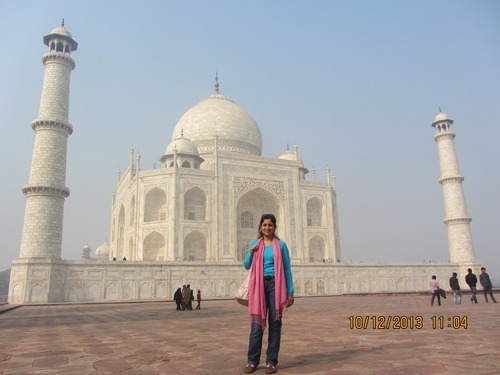
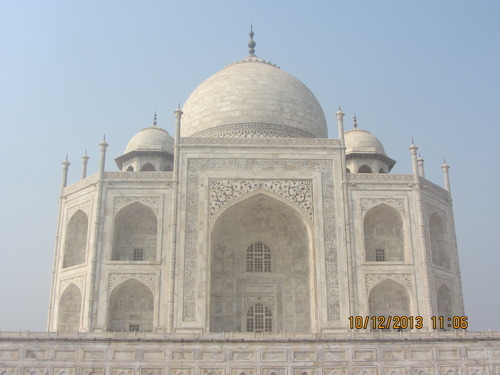
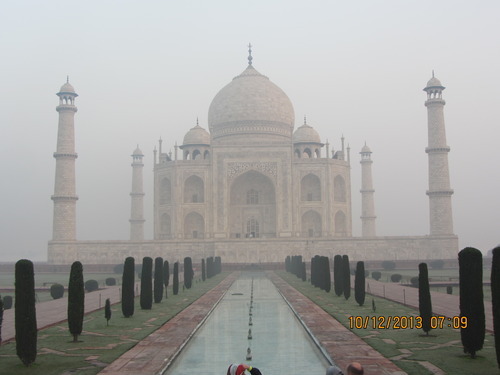
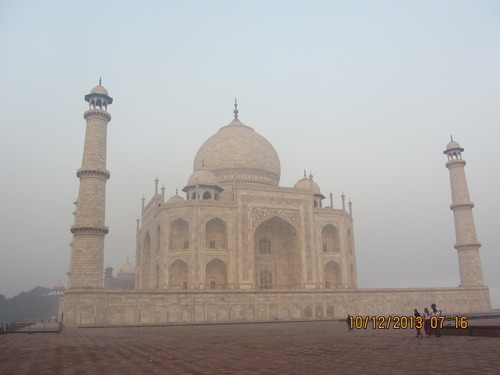
The inner chamber is a octagon with the design allowing for entry from each face. However, all the entries, except the one facing the main entrance have been closed.
The inner sanctum has two false sarcophagi, that of Mumtaz in the centre and a larger one of Shah Jahan to its left. It is probably the only assymetric section in the entire complex.
The false sarcophagi are bordered with an octagonal marble screen or jali with intricate work. Since muslim tradition forbids decoration of graves, the actual bodies are placed in a plain crypt beneath the inner chamber, facing mecca. These are no longer accessible to the general public.
.
The inner sanctum has two false sarcophagi, that of Mumtaz in the centre and a larger one of Shah Jahan to its left. It is probably the only assymetric section in the entire complex.
The false sarcophagi are bordered with an octagonal marble screen or jali with intricate work. Since muslim tradition forbids decoration of graves, the actual bodies are placed in a plain crypt beneath the inner chamber, facing mecca. These are no longer accessible to the general public.
.

(Photography is not permitted within the inner chamber.)
As I said earlier, the Taj Mahal complex is bounded by red sandstone walls on three sides. The river facing side is left open. On either side of the Taj are two red sandstone buildings, which are precise mirrors of each other. The western building is a mosque and the eastern one built for architectural balance was probably a guest house.
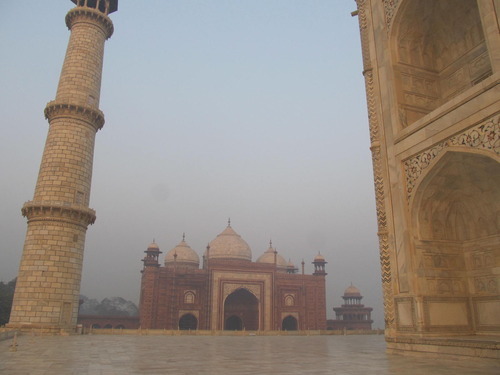
For those interested in more details, courtesy the internet :-). Not sure whom to attribute this to, apart from google.
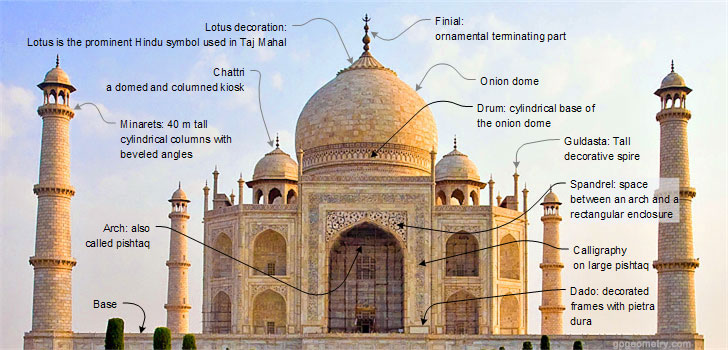
When we reached in the morning, the ethereal quality was further enhanced by the fact that there was a dense fog over the yamuna, probably because of the water being cooler.
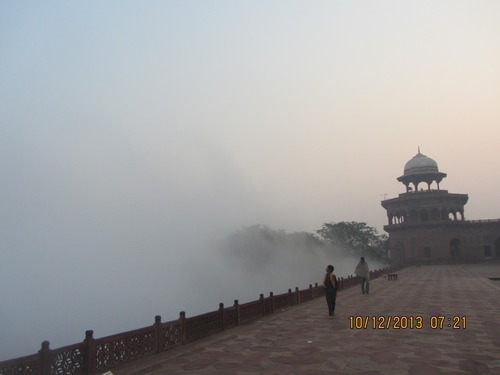
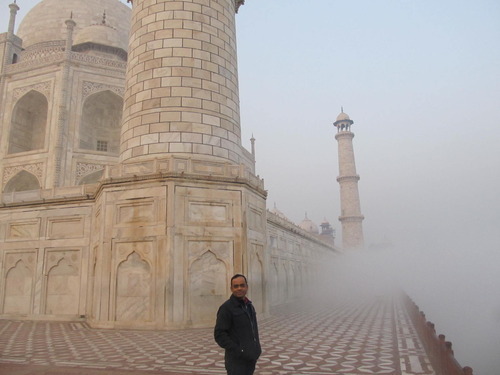
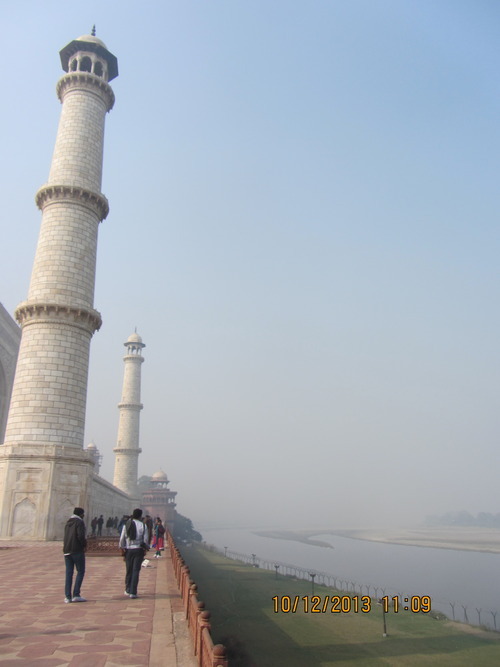
(View of Yamuna later in the day)
After walking around and admiring it for an hour, we went back to our rooms. After breakfast, we headed back, with family in tow. Nothing different now, except that the there were subtle differences in the reflection of sunlight off the marble and the slight fog had lifted. The crowd was also much more. Photography needed split second reflexes to ensure no one was covering you and minimal crowd in the background.

For those interested in more details, courtesy the internet :-). Not sure whom to attribute this to, apart from google.




(View of Yamuna later in the day)
After walking around and admiring it for an hour, we went back to our rooms. After breakfast, we headed back, with family in tow. Nothing different now, except that the there were subtle differences in the reflection of sunlight off the marble and the slight fog had lifted. The crowd was also much more. Photography needed split second reflexes to ensure no one was covering you and minimal crowd in the background.
A few more photographs...................................
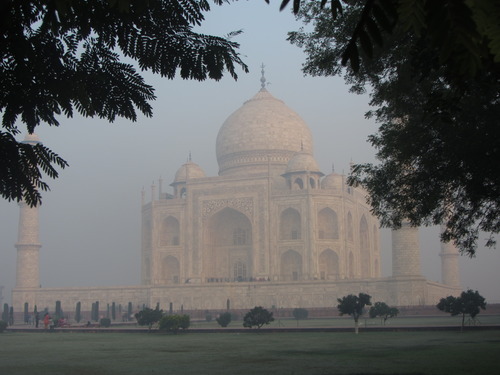
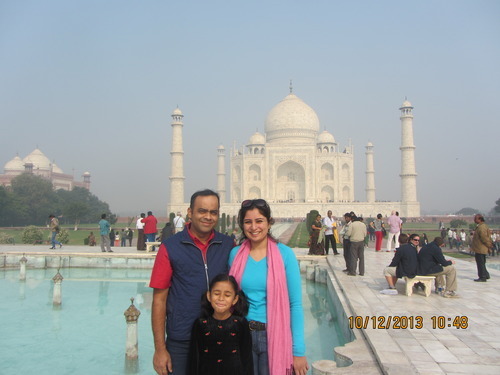
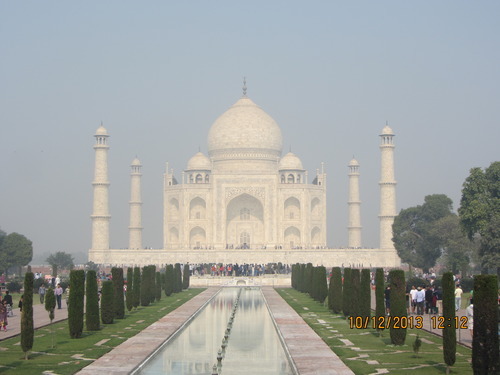
*******Crackpot Theories*********
Was very surprised to hear this theory from quite a few educated guys when I told them that I was going to see the Taj. They said it with a lot of conviction. So, out of curiosity, I decided to read up on it before going.
So, there is this group of people who are trying to prove that the Taj Mahal was a Shiva temple, named Tejo Mahalaya, built by a hindu king. Shah Jahan supposedly bought it off a local hindu chieftain and converted it into a mausoleum.
All the sites on the net are based on the writings of the main proponent, PN Oak and a writer on vedic spirituality, Stephen Knapp. The credibility of PN Oak, in my opinion took a nose dive the moment I found out that he also considers the Vatican and Kaaba as originally hindu temples. Credibility went into free fall when it emerged that Christianity is actually Krishna-neeti, a vedic religion. According to him, the Pope was a Vedic pontiff who was killed by Constantine the Great (in the year 312) and replaced with the leader of a small christian sect, etc, etc. After this small sampling of his world view, I decided not to waste too much time reading what he has to say.
One of the items provided as evidence is the finial which looks like a trident.... it looked more like a crescent moon to me.....The crescent also has islamic inscriptions.....next.
It seems there is more than enough historical evidence regarding its construction. In fact, there are a few European historians who have witnessed and chronicled it's construction. In any case, just one look at the Taj clearly trashes such a theory. Though it has hindu influences, it is, without doubt, a predominantly islamic architecture – and this fusion was what was Indo-islamic architecture.
Q.E.D Theory trashed.
**********************************
We had very limited time during this trip. Hopefully, the next time, we would be able to pay more attention to all the monuments, their surrounding buildings and their associated stories.
On getting back from the Taj, we packed up, had lunch and headed back. It was an uneventful trip back on the Yamuna Expressway. So I will not bore you any further, and call it a day.
Hope this inspires you to visit our 'friendly neighbourhood' city.
Hope this inspires you to visit our 'friendly neighbourhood' city.










